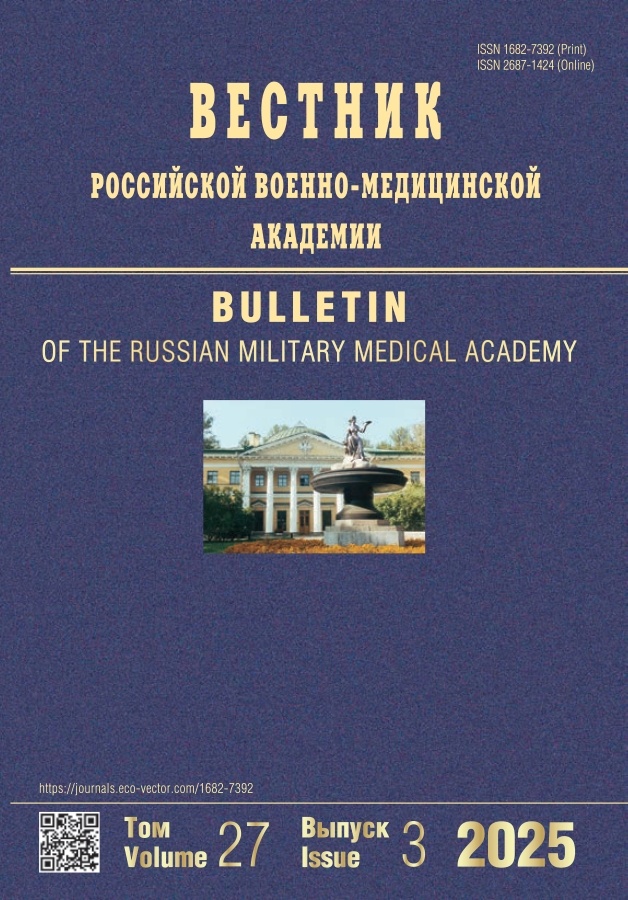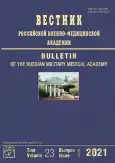Experimental substantiation of the optimal technique for choosing the rotation of the femoral component of the knee endoprosthesis
- 作者: Khominets V.V.1, Gaivoronsky I.V.2,3, Kudyashev A.L.4, Semenov A.A.2,3, Bazarov I.S.2, Semenova A.A.2,5
-
隶属关系:
- Military medical academy of S.M. Kirov
- Military Medical Academy named after S.M. Kirov
- Saint Petersburg State University
- Military Medical Academy named after S.M. Kirov,
- National Medical Research Center named after V.A. Almazova
- 期: 卷 23, 编号 1 (2021)
- 页面: 129-134
- 栏目: Experimental trials
- URL: https://journals.rcsi.science/1682-7392/article/view/63630
- DOI: https://doi.org/10.17816/brmma63630
- ID: 63630
如何引用文章
详细
There was experimental justification of the optimal technique for choosing the rotation of the femoral component of the knee joint endoprosthesis carried out in this research. The individual morphometric characteristics of the femoral condyles and the condition of the collateral ligaments were taken into account in the experiment. The research was conducted on polymer-embalmed preparations of the knee joint, which were divided into three groups, according to the forms of the femoral condyles. We used the standard technique of positioning the resection block and the technique of individual selection of the rotation of the resection block (rotation of the femoral component of the endoprosthesis), based on the assessment of individual morphometric characteristics of the femoral condyles and the state of the auxiliary elements of the knee joint. To implement this surgical approach, typical resections of the proximal condyles of the tibia and distal condyles of the femur were performed, which technically did not differ from the sawdust used in the standard procedure. Then the knee joint was flexed to an angle of 90°, Homan retractors were removed and two laminar dilators (Laminar Spreader) were installed in the gap between the proximal tibial sawdust and the posterior parts of the lateral and medial condyles of the femur. This technique provided isometric tension of the fibular and tibial collateral ligaments of the knee joint. Then carried out the positioning of the femoral resection block "four in one". In this case, only the line of the proximal tibial sawdust was used as a reference point, for which the posterior flange of the resection block was positioned parallel to the sawed upper articular surface of the tibia. It is established that the use of the considered technique of positioning the femoral resection block ensures the formation of a uniform flexor gap, regardless of the variant anatomy of the femoral condyles. Thus, there was research a uniform flexion gap in the experiment, which ensured isometric movements in the knee joint and its stability at the control points of the amplitude after implantation of the trial or final components of the endoprosthesis.
作者简介
Vladimir Khominets
Military medical academy of S.M. Kirov
Email: khominetz_62@mail.ru
SPIN 代码: 5174-4433
doctor of medical sciences
俄罗斯联邦, Saint PetersburgIvan Gaivoronsky
Military Medical Academy named after S.M. Kirov; Saint Petersburg State University
Email: i.v.gaivoronsky@mail.ru
SPIN 代码: 1898-3355
doctor of medical sciences, professor
俄罗斯联邦, Saint PetersburgAlexey Kudyashev
Military Medical Academy named after S.M. Kirov,
Email: a.kudyashev@gmail.com
SPIN 代码: 6138-0950
doctor of medical sciences, associate professor
俄罗斯联邦, Saint PetersburgAlexey Semenov
Military Medical Academy named after S.M. Kirov; Saint Petersburg State University
编辑信件的主要联系方式.
Email: semfeodosia82@mail.ru
candidate of medical sciences
俄罗斯联邦, Saint PetersburgIvan Bazarov
Military Medical Academy named after S.M. Kirov
Email: dok055@ya.ru
senior resident
俄罗斯联邦, Saint PetersburgAnastasia Semenova
Military Medical Academy named after S.M. Kirov; National Medical Research Center named after V.A. Almazova
Email: nastioxa@mail.ru
SPIN 代码: 2429-6876
candidate of medical sciences
俄罗斯联邦, Saint Petersburg参考
- Kornilov NV, Shapiro KI. Aktual’nye voprosy organizatsii travmatologo-ortopedicheskoi pomoshchi naseleniyu. Travmatologiya i ortopediya Rossii. 2002;(2):35–39. (In Russ.)
- Vagapova VSh. Funktsional’naya anatomiya kolennogo sustava. Meditsinskii vestnik Bashkortostana. 2007;2(5):69–74. (In Russ.)
- Kornilov NN, Kulyaba TA. Artroplastika kolennogo sustava. Saint Petersburg: RNIITO; 2012. 227 p. (In Russ.)
- Gaivoronskii IV, Khominets VV, Semenov AA. Possibilities of sonographic investigations of auxiliary elements of the intact knee joint. Kurskii nauchno-prakticheskii vestnik «Chelovek i ego zdorov’e». 2017;(4):103–107. (In Russ.)
- Vakulenko OYu, Zhilyaev EV. Osteoartroz: sovremennye podkhody k lecheniyu. Revmatologiya. 2016;(22):1494–1498. (In Russ.)
- Zaidman AA. Struktura I funktsii khryashcha. Ortopediya, travmatologiya. 1983;(10):10–15. (In Russ.)
- Semenov AA, Gaivoronskii IV, Khominets VV, Semenova AA. Sonographic morphometric characteristics of some auxiliary elements of the adult knee in different age periods. Vestnik Rossiiskoi voenno-meditsinskoi akademii. 2017;(3):72–76. (In Russ.)
- Insall JN, Dorr LD, Scott RD, Scott WN. Rationale of the knee society clinical rating system. Clin. Orthop. 1989;(248):13–14.
- Putz R. Anatomy and biomechanics of biomechanics of the knee joint. Radiology. 1995;35(5):77–86.
- Gardner DL. The nature and causes of osteoarthrosis. BritMed. J. 1983;286:418–424.
- Aweid O, Osmani H, Melton J. Biomehanics of the knee. Orthopaedics and Trauma. 2019;3(1):4–19.
补充文件








